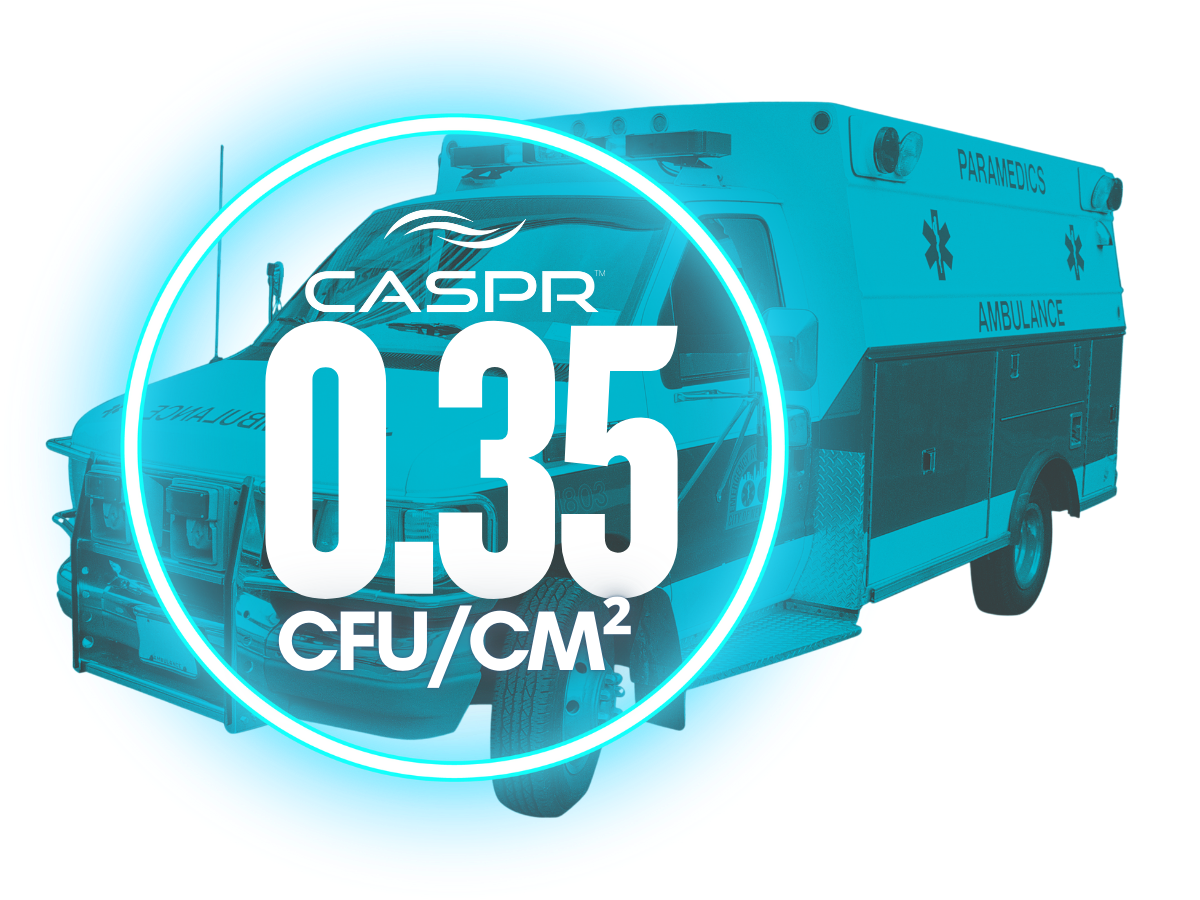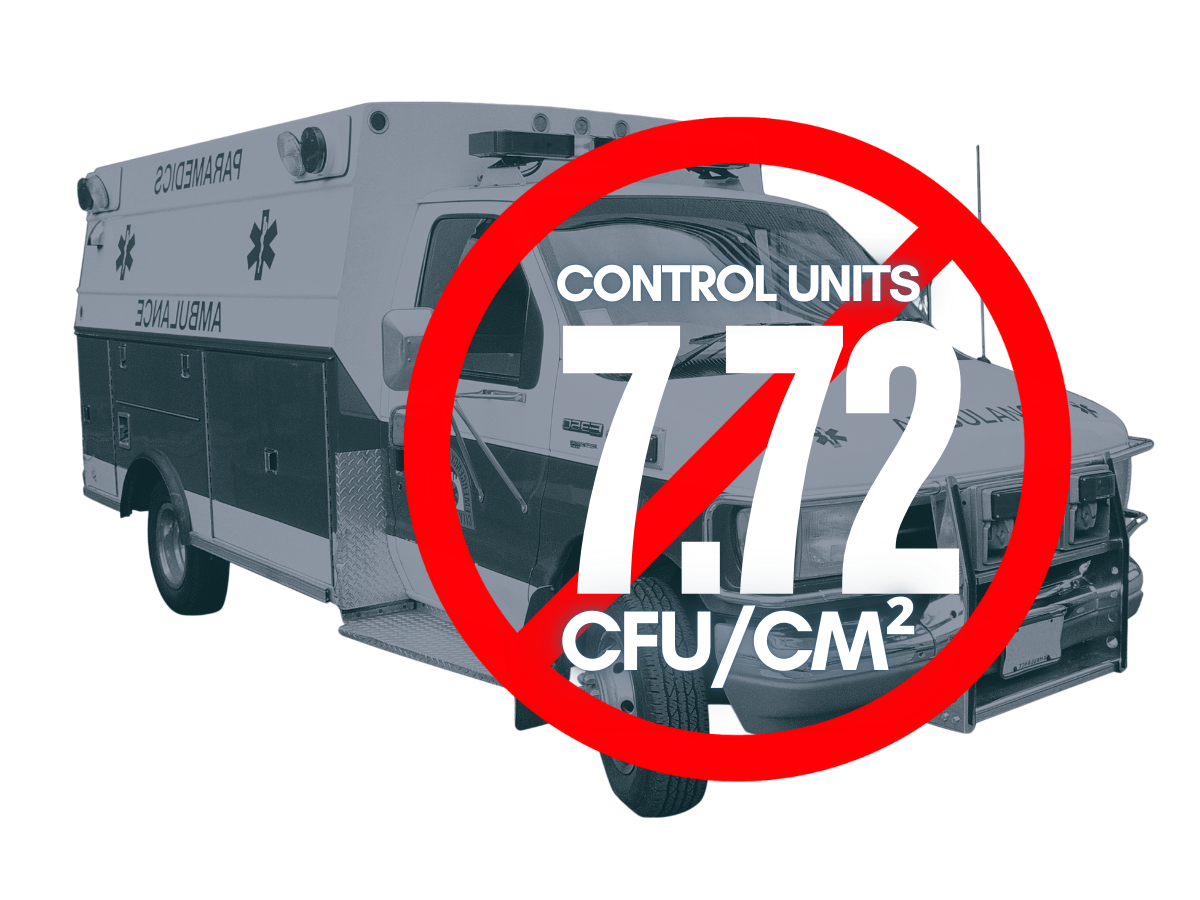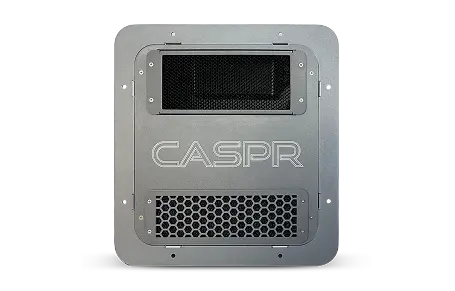Healthier Environments For Those Who Protect Us: Continuous Air & Surface Pathogen Reduction for Fire & EMS
Fire trucks and ambulances are uniquely high-risk environments for infection control. These vehicles are small, enclosed spaces where pathogens can accumulate quickly, exposing both first responders and patients to various bacteria and viruses. With limited time for cleaning between calls and uncertain patient infection status, traditional cleaning methods alone aren’t enough to keep these vehicles safe. Real-world testing confirms that EMS vehicles without continuous disinfection consistently exceed safe contamination levels, creating unnecessary risk for both crews and communities.
Fire trucks and ambulances face constant turnover of patients, limited time for cleaning, and high exposure to infectious agents. CASPR Transit was purpose-built to create healthier environments for first responders and patients by continuously reducing various bacterial and viral pathogens in the air and on surfaces—with no added workload for crews. This compact, low-maintenance solution works in the background 24/7, helping departments create safer vehicles and healthier crews.
CASPR Transit uses Continuous Air & Surface Pathogen Reduction (CASPR) technology, an advanced purification process that continuously reduces various bacterial and viral pathogens in both the air and on surfaces. Using CASPR’s Natural Catalytic Converter Innovation (NC2I) technology, the unit generates low, safe levels of hydrogen peroxide (H₂O₂) from the vehicle’s ambient air. These molecules circulate throughout the vehicle, actively reducing various bacteria, viruses, mold, and odors in real time. CASPR Transit works continuously, even while the vehicle is occupied, to provide constant disinfection.
CASPR Transit is proven effective against a broad range of threats, including:
CASPR Transit is built for simplicity and reliability. It requires replacement of both the NC2I bulb and the NC2I cell every 18–24 months. There are no chemicals to refill, no filters to change, and no daily cleaning needed. The system operates automatically, providing continuous air and surface disinfection without adding to your team’s workload.
To validate the effectiveness of CASPR Transit in real-world conditions, a four-week study was conducted inside active ambulances. Throughout the study, surfaces inside these vehicles were regularly swabbed to measure bacterial contamination. One ambulance was equipped with CASPR Transit, while two control vehicles operated without it. By comparing surface contamination levels between the CASPR-equipped vehicle and the controls, the study demonstrated how CASPR Transit continuously reduces various bacterial and viral pathogens, helping to create a healthier environment for both first responders and patients.
The American Journal of Infection Control, in a Claro-published article, sets the standard for healthcare surfaces at 2.5 CFU/cm² or lower to help reduce healthcare-associated infections (HAIs). In the real-world testing conducted above, CASPR Transit delivered surface contamination levels 86% cleaner than this standard, while control ambulances exceeded the threshold by over 200%.


DISCLAIMER: These graphs show the average reduction in bacterial contamination (CFU/cm²) on high-touch surfaces in ambulances with CASPR Transit, compared to control units without CASPR. The data confirms that CASPR Transit continuously lowers surface bioburden, helping to create a cleaner, healthier environment for first responders and patients.

The Spec. Sheet outlines all technical specifications, including dimensions, power options, and mounting configurations. It’s ideal for engineers and procurement teams evaluating integration into vehicles.

The Product Manual provides step-by-step instructions for installation, operation, and maintenance of the CASPR Transit unit. It ensures proper usage for continuous air and surface disinfection in transit environments.

This case study shows how CASPR Transit maintained bacterial levels 86% below medical safety thresholds in active ambulances. Control vehicles exceeded those limits, highlighting CASPR’s value in protecting frontline staff and patients.

In this study, ambulances using CASPR Transit saw an 89% average reduction in surface and airborne pathogens. The system operated safely during transport, enhancing infection control in occupied medical vehicles.
